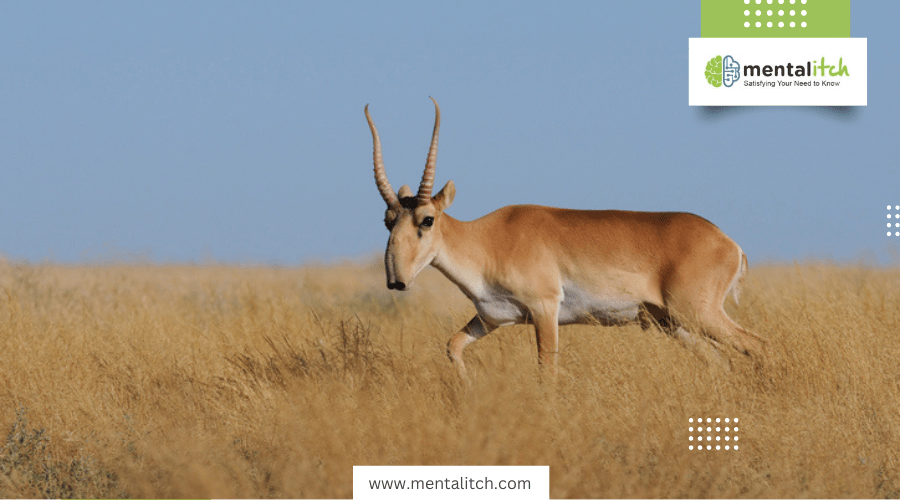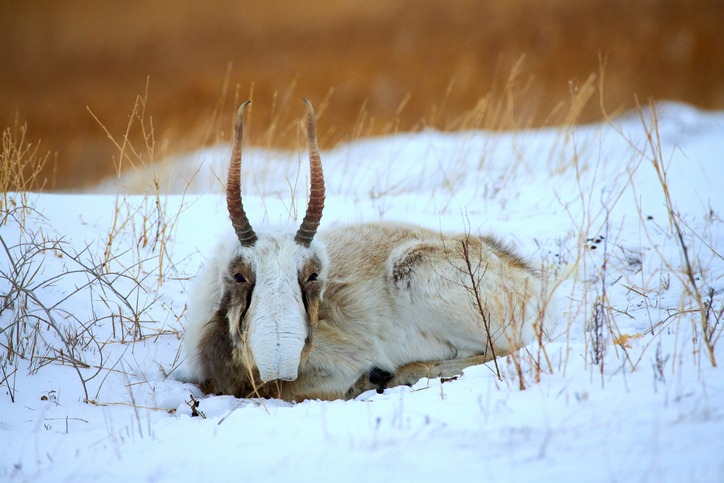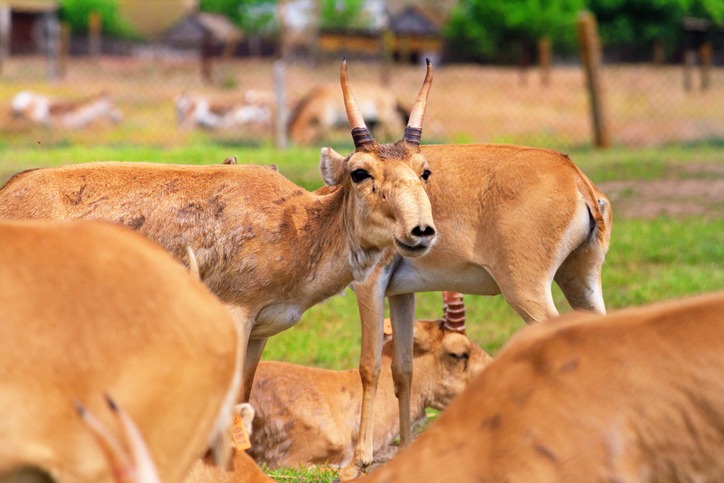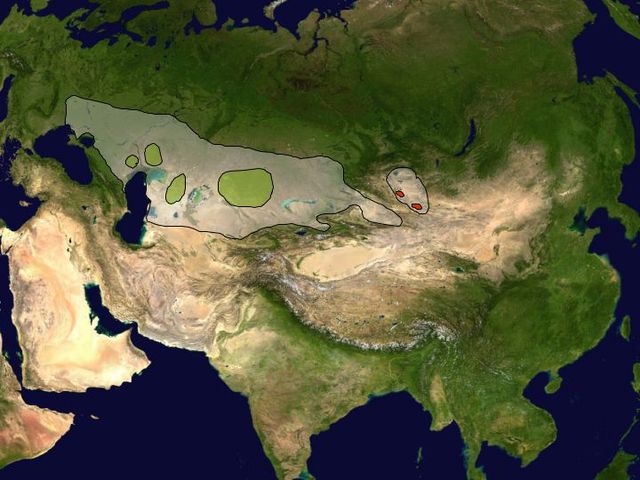Have you ever heard of the Saiga Antelope? It’s a unique species native to the harsh landscapes of Central Asia and is known for its large, bulbous nose that filters dust and regulates temperature.
From consuming toxic plants to migrating in large herds, the Saiga’s adaptability is truly impressive. But what makes them stand out, and why is their conservation so crucial? There’s much more to discover about this fascinating animal.
Unique Characteristics
Saiga antelopes have bulky noses that filter dust and regulate temperature. This unique adaptation is crucial for their survival. The nose acts like a built-in air filter, allowing the antelope to breathe more easily, even in challenging conditions.
This animal species consumes toxic plants that other animals avoid. Its dietary flexibility ensures that it can access food sources unavailable to many species.
When temperatures rise, the saiga antelope sheds its winter coat to help it stay cool in the summer heat. These adaptations showcase the antelope’s remarkable ability to survive and thrive in extreme climates.
Habitat and Range
Saiga antelopes inhabit Central Asia’s semi-desert, grassland, and steppe regions, including countries like Kazakhstan, Russia, Uzbekistan, Mongolia, and Turkmenistan. These open plains offer essential resources such as water and grazing vegetation, which are crucial for their survival.
They are adapted to extreme climates and can endure freezing winters and hot, dusty summers. The vast, open spaces are vital for their migration routes. Conservation efforts focus on preserving and restoring their natural habitats to maintain healthy populations. Protecting these areas ensures that saigas have the space and resources needed to thrive.
Migration Patterns
Saiga antelopes undertake long migrations to access essential pasture and water sources, crucial for survival. Their herds, sometimes up to 1,000 individuals, move in a coordinated fashion like African herds. These migrations help them navigate harsh environments, seek suitable habitats, and maintain ecological balance by preventing overgrazing and allowing vegetation to recover.
Diet and Feeding Habits
Saiga antelopes primarily eat grasses, herbs, and shrubs, and their unique digestive system allows them to consume plants toxic to other herbivores. In winter, they dig through snow to find roots and tubers, and they can extract moisture from vegetation, reducing their need for water. Saiga calves start grazing just days after birth, aiding their quick integration into the herd.
Reproduction and Lifespan
Female saigas reach sexual maturity at around one year old, while males mature slightly later. The gestation period lasts approximately 150 days, culminating in the birth of one or two saiga calves. These calves can stand and keep up with the herd shortly after birth, essential for joining migrations and escaping predators.
Mothers provide crucial care and protection during the early stages of their calves’ lives, significantly enhancing their survival prospects in the harsh steppe environment. Their average lifespan in the wild ranges from six to ten years.
Key aspects of saiga reproduction and lifespan include:
| Aspect | Detail |
| Sexual Maturity | Females: 1 year, Males: slightly later |
| Gestation Period | About 150 days |
| Lifespan in the Wild | Around 6-10 years |
Threats to Survival
The saiga antelope faces critical threats, including poaching for their horns, habitat loss due to agricultural expansion and human settlements, climate change, and disease outbreaks. These threats disrupt their natural behaviors, migration patterns, and access to food and water, fragmenting their populations and increasing their vulnerability. Conservation efforts, such as creating protected areas and promoting sustainable land-use practices, are crucial for their survival.
| Issue | Impact on Saiga Antelopes |
| Agricultural Expansion | Loss of traditional feeding grounds |
| Human Settlements | Disruption of natural environment |
| Loss of Migration Routes | Difficulty finding food and water |
| Habitat Destruction | Decline in saiga populations |
Poaching and Illegal Trade
Beyond habitat loss, poaching and illegal trade gravely threaten saiga. Poachers target them for their horns, meat, and skins, with the demand for horns in traditional Chinese medicine driving illegal trade. In the 1990s, intense poaching caused a catastrophic population crash, and the trade in horn, worth up to $100 per kilogram, continues to endanger them.
To protect saiga antelopes, it is crucial to combat poaching and illegal trade by raising awareness and promoting stronger enforcement.
Conservation Efforts
The Saiga Conservation Alliance (SCA) is leading efforts in wildlife crime prevention and habitat restoration to ensure the survival of these antelopes. Their multifaceted approach includes educational programs, habitat restoration, and community involvement, all aimed at safeguarding the future of this endangered species.
In 2023, SCA’s educational programs reached 2,200 individuals, fostering community involvement in conservation. The Resurrection Island project focuses on reviving their populations in the Aral Sea region by creating a sustainable environment for these unique animals. Additionally, the Kuralai Alternative Livelihood Project empowers local women with sustainable alternatives to poaching.
Here is an overview of SCA’s key projects and their impact:
| Project Name | Focus Area | Impact |
| Wildlife Crime Prevention | Saiga antelope | Reducing illegal poaching |
| Habitat Restoration | Saiga antelope | Improving natural habitats |
| Educational Programs | Community Involvement | Reached 2,200 individuals in 2023 |
| Resurrection Island Project | Aral Sea Region | Reviving saiga populations |
| Kuralai Alternative Livelihood | Empowering Local Women | Providing sustainable livelihood alternatives |
SCA also monitors populations under the Convention on Migratory Species (CMS), guiding essential policy decisions. These comprehensive initiatives are vital for protecting these antelopes and ensuring their conservation for future generations.
Population Status
Conservation efforts have significantly boosted the saiga antelope population. A 2021 aerial census in Kazakhstan reported 842,000 saiga antelopes, and a 2023 survey revealed the population exceeded 1.9 million. This rapid growth highlights the success of conservation initiatives.
Key highlights include:
- The Ustyurt Plateau had the largest mass calving event in 2020.
- Numbers have surged dramatically within a few years.
- Saiga populations in Central Asia are now thriving due to persistent conservation efforts.
While challenges remain, the remarkable increase in numbers demonstrates the impact of dedicated conservation work. With continued support, these animals are on a hopeful path away from extinction.
How to Help
Donating to organizations like the Saiga Conservation Alliance can help fund anti-poaching efforts, habitat restoration, and crucial research projects for the animal’s survival.
Raising awareness is also very helpful. Share information about the threats these antelopes face, such as poaching and habitat loss, on social media platforms. Educate people about the importance of conserving these unique creatures and encourage them to get involved.
Participate in local and international campaigns. Whether you’re assisting with field research, community outreach, or policy advocacy, your efforts contribute to a larger movement dedicated to their conservation.
Advocate for sustainable practices that benefit saiga antelopes and their ecosystems. Support legislation that promotes sustainable land use and opposes poaching. By taking these steps, you can help ensure a future for saiga antelopes.
Conclusion
The saiga antelope is an amazing and resilient animal species, perfectly adapted to the harsh environments of Central Asia. With its unique nose, ability to consume toxic plants, and impressive migratory patterns, it demonstrates extraordinary survival skills.
The species faces significant threats from poaching, habitat loss, and climate change. Conservation efforts led by organizations like the Saiga Conservation Alliance have shown promising results, with populations rebounding significantly.



